Dodge Journey: Operation, Removal
OPERATION
CAMSHAFT AND CRANKSHAFT SIGNALS
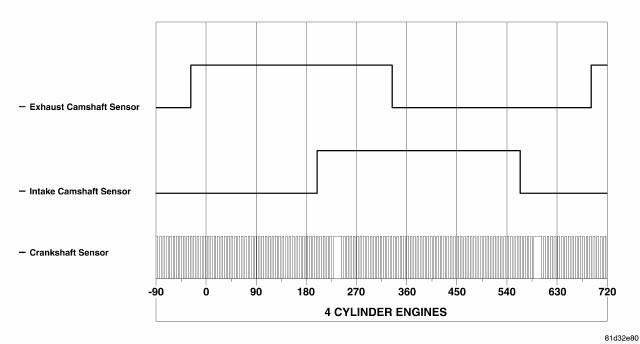
Fig. 29: 4 Cylinder Cam & Crank Signals
NOTE: The graphic represents the relationship between camshaft and crankshaft sensors edges with camshafts in "lock pin" position (cam shafts are not "phasing"). This is normally seen during idle.
Depiction of good camshaft and crankshaft square wave signals for 4 cylinder engines.
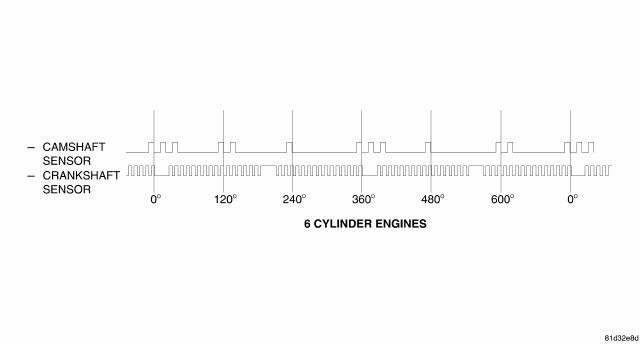
Fig. 30: 6 Cylinder Cam & Crank Signals
Depiction of good camshaft and crankshaft square wave signals for 6 cylinder engines.
REMOVAL
2.4L FRONT
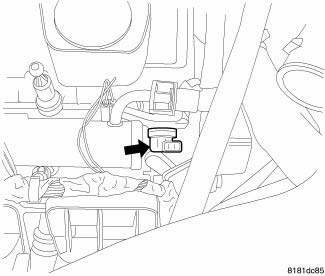
Fig. 31: Front Cam Sensor
1. Disconnect and isolate negative battery cable.
2. Disconnect electrical connector from camshaft position sensor.
3. Remove camshaft position sensor mounting screw.
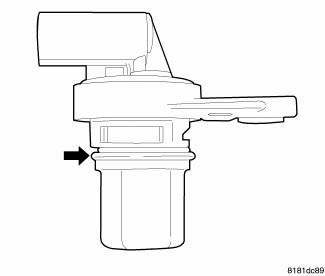
Fig. 32: Removing/Installing Camshaft Position Sensor
4. Remove sensor.
2.4L REAR

Fig. 33: Identifying Camshaft Position Sensor Heat Shield - Remove/Install
1. Disconnect and isolate negative battery cable.
2. Disconnect electrical connector at sensor.
3. Remove nut retaining heat shield.
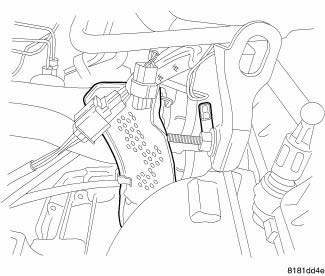
Fig. 34: Identifying Camshaft Position Sensor Heat Shield - Remove/Install
4. Pull heat shield out to uncover sensor.
5. Remove mounting bolt.
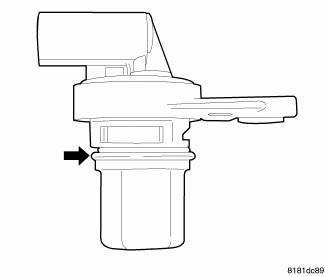
Fig. 35: Removing/Installing Camshaft Position Sensor
6. Remove sensor.
2.7L
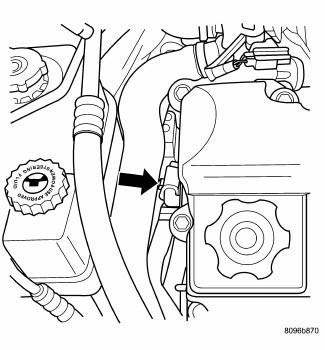
Fig. 36: Cam Sensor Location 2.7L
The camshaft position sensor is mounted in the front of the head.
1. Disconnect electrical connector from sensor.
2. Remove camshaft position sensor screw.
3. Without pulling on the connector, pull the sensor out of the chain case cover.
3.5L
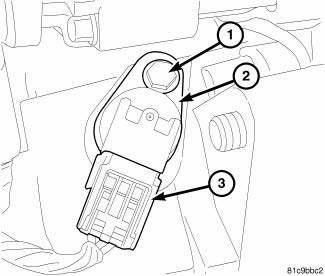
Fig. 37: 3.5L Camshaft Sensor
1. Disconnect and isolate the negative battery cable at battery.
2. Disconnect electrical connector (3) from camshaft position (CMP) sensor (2).
3. Remove bolt (1) and CMP sensor (2).
 Installation
Installation
2.4L FRONT
Fig. 38: Removing/Installing Camshaft Position Sensor
CAUTION: Install camshaft position (CMP) sensor utilizing twisting
motion. Make sure
CMP sensor is fully seated. Do n ...
See also:
MEDIA CENTER 130 (RES) — AM/FM STEREO RADIO WITH CD PLAYER (MP3 AUX JACK)
NOTE: The radio sales code is located on the lower right
side of the radio faceplate.
RES Radio
Operating Instructions — Radio Mode
NOTE: The ignition switch must be in the ON or ACC
position ...
WINDOWS
Power Windows
The window controls on the driver’s door trim panel
control all of the door windows.
Power Window Switches
There are single window controls on each passenger door
trim panel, wh ...
TRAILER TOWING
In this section, you will find safety tips and information
on limits to the type of towing you can reasonably do
with your vehicle. Before towing a trailer, carefully
review this information to tow ...

